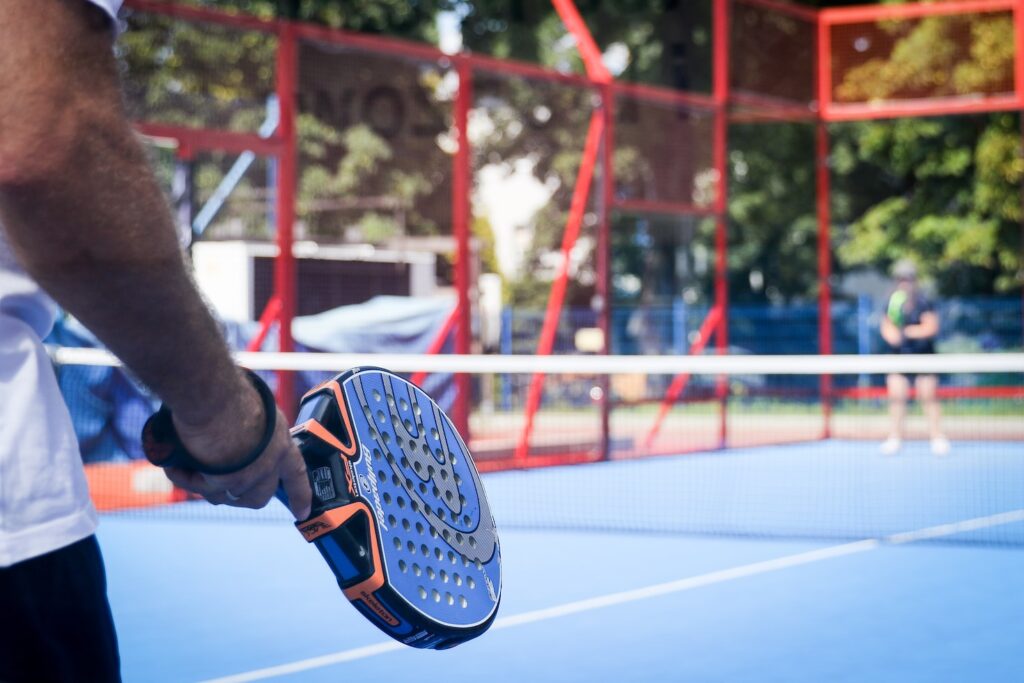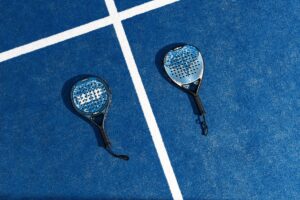The difference between tennis and padel: Padel explained
3 min read
The Difference Between Tennis and Padel: Padel Explained
Are you a fan of racket sports? If so, you may have come across padel, the fast-growing sport that combines elements of tennis and squash. Padel is often dubbed as the cousin of tennis, but it is a unique sport in its own right. In this article, we will explore the differences between tennis and padel, giving you a better understanding of this exciting game.
The Basics of Padel
Before we dive into the comparisons, let’s start with the basics. Padel is played on a smaller court with glass walls on all sides. The court is only two-thirds the size of a tennis court, measuring 20 meters long and 10 meters wide. Padel rackets are solid, made of composite materials, and have no strings. The ball used is similar to a tennis ball but slightly less pressurized.
The scoring system in padel is also different from tennis. Padel is played in doubles, and the scoring follows a “no-advantage” system. This means that if a game reaches a deuce, the next point wins it, eliminating the need for multiple advantages. This keeps the game fast-paced and exciting.
Similarities and Differences
While both tennis and padel involve hitting a ball with a racket and the aim is to outplay your opponents, there are some fundamental differences between the two sports.
1. Playing Surface
The most notable difference is the playing surface. Tennis is typically played on hard, grass, or clay courts, while padel is played on artificial grass or acrylic surfaces. This difference affects the speed and spin of the ball, as well as the footwork required from players.
2. Court Size
The size of the court is where padel truly shines. With a smaller court, players have less ground to cover, making it easier to get into the action and making the game more dynamic. The glass walls in padel also add a unique element, as players can use them to bounce the ball and create unexpected angles.
3. Ball and Rackets
In tennis, the ball can be hit hard and fast, while in padel, the ball is less pressurized, giving it a slower pace. This slower pace allows for longer rallies and more strategic shots. The padel racket, with its solid construction, provides greater control over the ball, allowing players to execute precise shots.
Why Padel is Gaining Popularity
Padel has been gaining popularity around the world, and there are several reasons why this sport is capturing the hearts of both amateur and professional players.
Firstly, the smaller court size in padel means that it is easier to learn and master the basics of the game. This accessibility makes it appealing to beginners and those looking for a new hobby or a fun way to stay active. Additionally, the glass walls in padel not only create a unique playing experience but also enable spectators to enjoy the game from all angles, adding to the social aspect of the sport.
Moreover, the strategic nature of padel is highly engaging. With less space to cover, players must rely on cunning shot placement and teamwork to outwit their opponents. This makes padel a thrilling and tactical game to watch and play.
Conclusion
So, is padel just another version of tennis? Absolutely not! Padel is a sport in its own right, with a unique set of rules, court, and playing style. The smaller court, solid rackets, and glass walls all contribute to making padel a dynamic and enjoyable sport for players of all skill levels. Whether you’re a tennis enthusiast looking for a new challenge or someone interested in racket sports, give padel a try and experience the thrill of this growing sport firsthand. Get your padel racket and step onto the court today!






